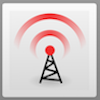
Spotlight on International Masterclasses, Part 1
What? International Masterclasses now? Aren't they around March?
Yes, they are, but registration opens today for IMC 2020 videoconferences. We use Doodle Polls to register and each time slot is limited to five institutes. These polls are open until November 29; after that, you must register by e-mail. Go to the CMS Doodle, the ATLAS Doodle, or the MINERvA Doodle for Fermilab videoconferences. Beyond Fermilab, there are videoconferences hosted at CERN, GSI (Germany), and KEK (Japan). To find out about these, see the latest International Masterclasses Circular, hot off the electronic press.
Interested in reading more about IMC? Check out this APS-DPF proceedings paper or this article for international schools from Global Insights.
So, again, why this spotlight now? If you are a mentor, it is to remind you that this is the time to contact your teachers to figure out dates and get the slots you want before it is too late. If you are a teacher, it is a call to let your mentor know that you are interested in having a masterclass for your students.
It may seem early, but the days grow short. Winter is coming. And then, International Masterclasses.


News from QuarkNet Central
Remember that Beamline for Schools (BL4S) proposals are due March 31, 2020. Learn more at the BL4S website.
International Cosmic Day is upon us: Wednesday, November 6, 2019. Register now if you haven't already.
Thinking about going to the AAPT Winter Meeting in Orlando? Early bird registration ends on November 11. It is worth taking advantage of the discount!

Physics Experiment Roundup
What a roundup! The horses are out of the corral this week. We can start with the dark sector and Interactions, where we find that the new Dark Energy Spectroscopic Instrument (DESI) is ready for tests in Arizona and LUX-ZEPLIN has reached a milestone at Sanford Lab in South Dakota. Staying with dark matter, on the astro front with Physics Today, the new Giant Radio Array for Neutrino Detection (GRAND, not to be comfused with the more venerable GRAND in Indiana) is set to begin preliminary installation in China, while Fermi-LAT has opened a gamma ray channel to study novae. Physics Today also reports progress on the LHC during the long shutdown, New Atlas extols a best-ever measurement of the Higgs mass at CMS (no, the irony is not lost on us), and CERN Bulletin tells of the civil engineering of a new post-LHC accelerator.

Resources
Superconductivity is fundamental to both experimental and theoretical particle physics. (Read how the Higgs mechanism is bound up with superconductivity in New Scientist.) Physics Today has a recent article about a new superconducting material and a compendium of literature by John Bardeen on the subject.

Just for Fun
Our friends at Fermilab Today brought us the Halloween physics news yesterday, with a nu take on a costume, the second suggestion of thermodynamics, and Bob Wilson's vault.
Meanwhile, in Baltimore, our own Jeremy Smith had a brainstorm which ended with two views of spin-1/2: a nice animation in Wikipedia and a Balinese candle dance, "specifically," as Jeremy writes, "the moves at 2:42, where they spin the candles twice in the same direction while keeping them upright, a decent analogy for spin-1/2."
QuarkNet Staff:
Mark Adams: adams@fnal.gov
Ken Cecire: kcecire@nd.edu
Shane Wood: swood5@nd.edu